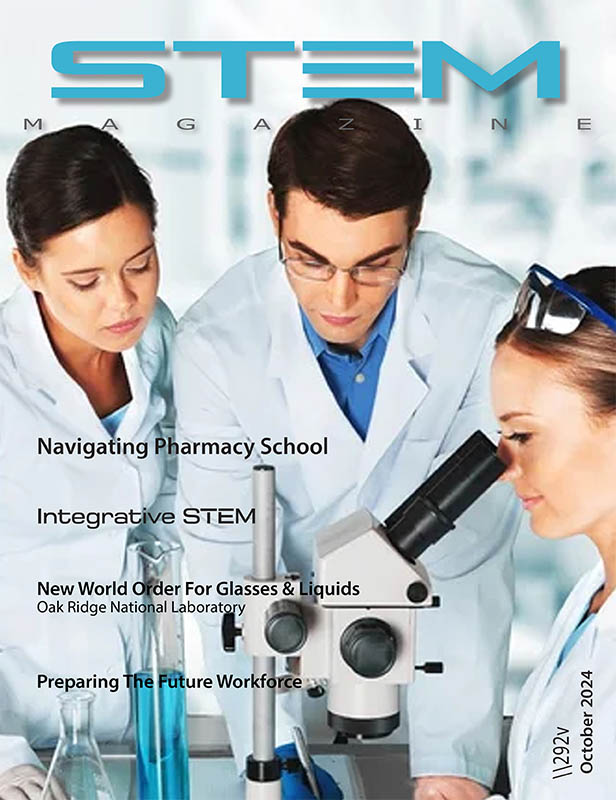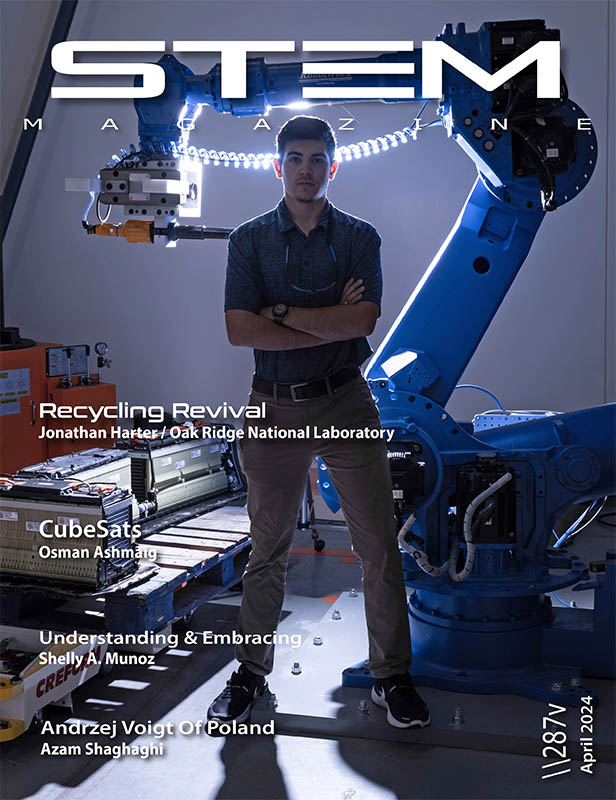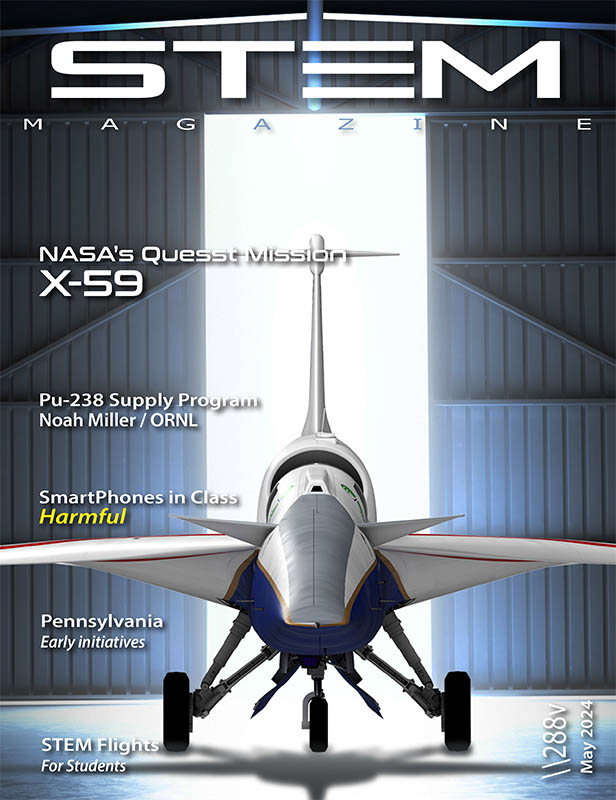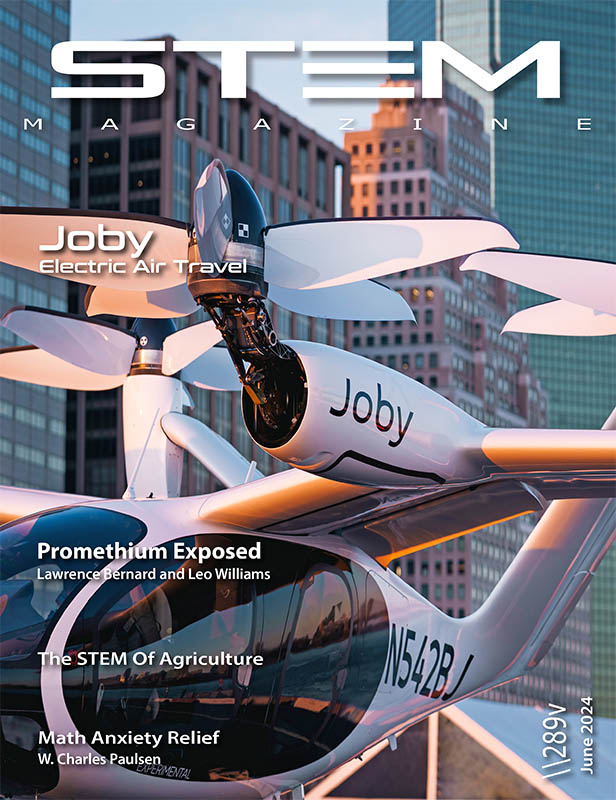STEM
STEM Magazine is currently available globally, electronically, and monthly, offering the current months issue for your use.
Content is diverse, engaging, inspirational and cutting edge, covering a wide range of educational and career development articles appropriate for all ages and industries. Authors from around the world offer their expertise and vision on subjects that include child and adolescent psychology, neuroscience development, science innovation, medical / research careers, technology, cybersecurity, A.I., aviation / space industry innovations and a host of career opportunities.

April 2022

May 2022

June 2022

July 2022

August 2022

Sept. 2022

Oct 2021

Nov 2021

Dec 2021

Jan 2022

Feb 2022

March 2022

April 2021

May 2021

June 2021

July 2021

Aug 2021

Sept 2021

Oct 2020

Nov 2020

Dec 2020

Jan 2021

Feb 2021

March 2021

April 2020

May 2020

June 2020

July 2020

Aug 2020

Sept 2020

Oct. 2019

Nov. 2019

Dec 2019

Jan 2020

Feb 2020

March 2020








Sept. 2019
Aug. 2019
July 2019
June 2019
May 2019
April 2019
March 2019
Feb. 2019

Jan. 19

Dec. 18

Nov. 18

Oct. 18

Sept. 18

Aug. 18

July 18

June 18

May 18

April 18

March 18

Feb. 18

Jan. 18

Dec. 17

Nov. 17

Oct. 17

Sept. 17

Aug. 17

July 17

June 17

May 17

April 17

March 17

Feb. 17

Jan. 17

Dec. 16

Nov. 16

Oct. 16

Sept. 16

Aug. 16

July 16

June 16
The STEM of Teaching
Teachers are number 2 on our list of careers that “most Americans do”, following retail sales. With nearly 4 million public and private school educators, this group of professionals has the responsibility of not only presenting curriculum throughout the school year, but possibly as important, influencing students in a variety of ways.
For educators who understand with STEM really means, they realize that every teachers in every subject and every grade using STEM as defined in every issue of this magazine. Let’s take a closer look for how every teacher is a STEM teacher in application regardless of curriculum.
The Science of Teaching
By definition, science is the “systematic accumulation of knowledge”. I cannot name one subject in school at any grade level that does not require this systematic accumulation. By definition, all teachers use this form of science daily as well as their students. Memorization, testing, homework, research and assignment completion all require this gathering of facts, theories, historical data, and personal experiences in preparation for a testing evaluation of how well this knowledge has been gathered or accumulated.
The Technology of Teaching
As defined, technology is the “practical application of science” as we just explained. Practical application is the use of something for a reasonable purpose. The age old question posed by students remains relevant; “How am I going to use this in the real world?”
An example of practical application is using a school math lesson to figure out the total cost of items while grocery shopping. Calculating percentages, discounts, simple math or more complicated geometry used by carpenters on a daily bases. Simply following a recipe while cooking is a great math example of how we use this every day.
The technology or practical application of knowledge accumulation in English class is used in all career fields since communication’s, writing skills, grammar, and spelling are all included in your chosen job.
This would be a good topic of discussion at home between students and parents (with life experience) to consider and evaluate the practical application (use) of school subjects such as:
– Math
– Social Studies
– Geography
– History
– Earth Science
– Language Arts
– Foreign Language
– Music
– Health Class
– any other subjects you are taking.
The Engineering of Teaching
This feature of education is one of my favorites to discuss and probably the least understood by most teachers. Engineering is one of those words that has hundreds of practical applications and hundreds of career definitions, but must be specifically defined in order to be discussed.
Engineering is a process defined by the engineering method that is used to “solve problems”. Engineers are problem solvers, and problem solvers are engineers, regardless of their education or career field. The process of solving problems remains the same.
· ASK: What is the problem?
· IMAGINE: What are some possible solutions? Has anyone else had to deal with this problem?
· PLAN: Make a list of possible solutions to the problem?
· – Financial cost
· – Available resources or supplies
· – Time line for solution
· – Other needs such as people or a location needed
· TRY IT: Pick a single solution and try it out
· EVALUATE: Did it work? Why or why not?
If your evaluation fails to solve your problem, you simply go through the process again until something works. This is a fun process that offers challenges, brainstorming, deep thought and imagination. I personally find deep gratification is solving problems of all kinds. The reward is very satisfying and boosts your self-esteem.
That being said, teachers are solving problems daily in class and at home using this method…often without their knowledge of the steps. Some experts are exploring our natural ability to solve problems this way. Is it already wired into many brains? Is it common sense? Life experience?
The Math of Teaching
Math is the “science of numbers and their operations”. Once again we see the systematic accumulation of knowledge mentioned in the definition of mathematics. We have to build our stored knowledge of numbers operations for future use.
How does “non-math class” teaching use that? In all subjects, students are individuals but also numbers in the broader picture of education as a whole. Student performance is tracked using numbers, evaluated numerically and charted using graphs, percentages, and statistics. The total number of class periods projected for a school year is considered with the total amount of information needing to be taught by the teacher. These calculations are constantly revised numerically throughout the school as unexpected delays or interruptions occur.
Grading is the obvious use of math as well as tracking those numbers for each student and the combined data of the class as a whole. This application of math usually involves the use of mathematical statistics, a widely needed area of math in industries worldwide.
So here we have a Language Arts teacher who suddenly realizes the use of STEM in their class and personal life on a daily basis. This “ah-ha” moment can provide great influence in the live of their students as to the practical applications of STEM in every school subject as well as every career field. It can be life changing for all involved.
To conclude, there is a national and global shortage of teachers in all grade levels. Even though teaching is the second most populated career in America, the shortage is severe. Teachers is all 50 states are quitting faster than the student dropout rate. Over the years I have asked students in all grade level’s, “Would you like have your teachers job?” With very few exceptions, the overwhelming response was, “No way. These students would drive me crazy.”


























